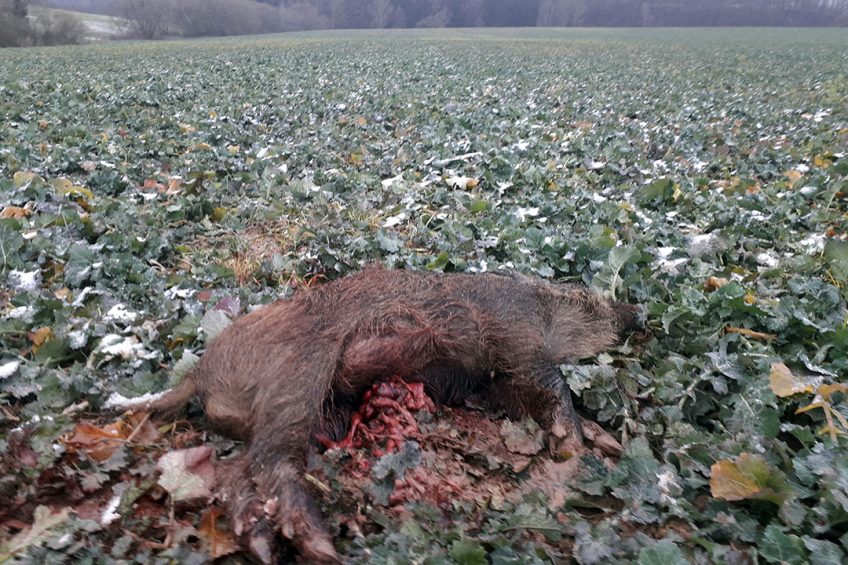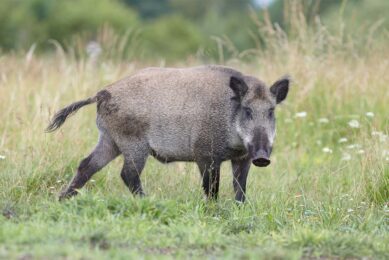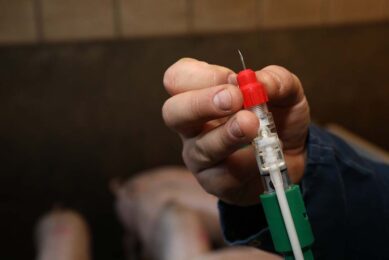How ASF was eradicated in the Czech Republic

Of all the European countries that detected outbreaks of African Swine Fever in recent years, the Czech Republic has been the only one to actually eradicate the virus again. Strict control measures, strict biosecurity and a coordinated approach played a part in the successful eradication of the virus. Here is how that went.
The Czech Republic detected its first occurrence of African Swine Fever virus (ASFv) after passive surveillance that started in 2014. ASFv was detected in two wild boars, which were found dead on 21 and 22 June 2017 in the cadastral territory Příluky u Zlína, Zlín District, Zlín Region.
The National Reference Laboratory for ASF, the State Veterinary Institute Jihlava, confirmed the positive finding of ASFv on 26 June 2017. Since 15 April 2019 there were 230 cases of ASF registered in wild boar involving 212 cases of wild boar found dead and 18 cases of hunted wild boar.
The last ASF positive cases in wild boars were detected on 8 February 2018 in hunted wild boar and on 15 April 2018 in wild boar found dead – however, these carcasses were decomposed (three to six months old). All positive cases were detected in a small area (only 89 km2) in the Zlín District. In domestic pigs, no outbreak of ASF was detected in the Czech Republic. There are currently no positive cases of ASF within the territory of the Czech Republic.
Veterinary control measures and prevention
Upon discovery of the first ASF positive carcasses, the country took immediate veterinary measures in accordance with the European Commission’s Council Directive 2002/60/EC and national legislation (Veterinary Act No 166/1999 as amended and decree No 202/2004 on measures for the prevention and control of ASF). The country took additional veterinary measures depending on the development of the epidemiological situation.
The infected area (Zlín District) was defined on 27 June 2017 (Commission implementing decision (EU) 2017/1437). The area with intensive hunting was determined around the infected area on 13 July 2017. On the basis of result of passive surveillance and yearlong home range, the authorities defined the high-risk zone for ASF in the infected area on 18 July 2017 and the low-risk zone (infected area without high-risk zone) for ASF in the infected area on 21 July 2017, see Figure 1.
Figure 1 – Risk-based ASF zoning in Zlín District, Czech Republic, 2017.

Veterinary measures were established, including a ban on all hunting activities in the infected area and a ban on feeding wild boars. Investigation of the epidemiological situation was carried out in the whole defined infected area, including an inspection of the surrounding site of the place where wild boar were found and tested positive for ASF.
The authorities ordered an active search of wild boar carcasses in the infected area. Searching was provided by local hunters under biosecurity measures and supported by payment for each found dead wild boar. Only official veterinarians carried out sampling in rendering plants. Odour and electric fences were installed on the outer periphery of the high-risk zone for ASF (‘core zone’ – 57 km2) and a ban on entering the core zone without permission of the municipal office was imposed.

Hunting in the core zone
In the core zone, hunting was strictly prohibited. Exceptions from the hunting ban were allowed later, but only for approved local hunters trained by the Czech State Veterinary Administration (SVA) applying biosecurity rules during hunting and transport of hunted animals for ensuring no disease spread.
The SVA trained about 1,300 hunters. However, only individual hunting was allowed after having obtained sufficient data on disease spread, primarily in the low risk zone (about a month after the first findings) and secondary also in the high risk zone (since 11 September 2017). All wild boars hunted in the infected area had to be safely disposed of in rendering plants and tested for ASF. Carcasses were identified with a ‘seal’, collected in a plastic bag and carried to the nearest road (collection point) where dedicated vehicles transported them to the rendering plant. An official veterinarian sampled carcasses at the rendering plant.
In an attempt to reduce the number of pigs in the high-risk zone at the end of the epidemic phase of ASF infection, the SVA cooperated with the Czech police. Hunting of wild boar in the high risk zone by police snipers started on 16 October 2017.
Snipers were trained for wild boar hunting and on biosecurity during hunting and were employed in a high risk zone and hunted 157 wild boars in total, eight of them were positive for ASF. The SVA collected all shot wild boar, safely transported them to the nearest road and then official veterinarians sampled them at the rendering plant. There was a significant reduction in the number of pigs in the area at the end of the event. At the same time positive findings outside the core zone occurred, see Figure 2.
Figure 2 – Positive findings, ‘core zone–fenced area’, Czech Republic, 2017-2018.


Intensive search for wild boar carcasses
As wild boar carcasses constitute the greatest risk for the spread of ASF in wild boar population, the SVA ordered users of hunting grounds in the infected area to carry out an intensive search for wild boar carcasses from 22 March 2018 until 22 April 2018. There was a payment for searching and every carcass found.
In total 56 carcasses were found during this action, ten of them were ASF positive. All ASF positive carcasses were about three to six months old. Infections and subsequent death of these wild boars occurred at the end of 2017 or January 2018. Samples with positive results were sent to European Reference Laboratory for ASF, located in Madrid, Spain. The laboratory confirmed the presence of DNA of ASFv by PCR. Cultivation tests showed that no live virus was present in the samples and that the carcasses did not pose any risk for the further spread of ASF.
Prevention of introduction to domestic pigs
Parallel to that, the SVA acted to prevent the introduction of ASF into the domestic pig population. Since July 2017, there have been extraordinary official controls of holdings focusing on biosecurity. One of the main duties ordered in the infected area was to increase biosecurity and strictly avoid contact between wild boar and domestic pigs. Only after SVA approval, it was allowed to move pigs. It was also forbidden to use straw and grass as a feed and feed cereals from the last harvest from the infected area. Pigs had to remain inside stables and special working clothes and shoes had to be used. A ban on keeping pigs in backyard holdings was endorsed in the high risk area.

Municipalities in the whole Zlín region had to perform a census of all pig holdings until the end of January 2018. A duty to check all pig movements, a system of early detection, regular visits and checks by veterinary inspectors and system of testing of sick/dead animals in pig holdings also contributed to minimise the risk of ASF spread. Intensive communication campaigning happened through the media, information leaflets, training of hunters and with help of private veterinarians. That all resulted in the fact that no case of ASF in wild boar was detected outside the infected area in the Czech Republic. In addition, no outbreak was detected in domestic pigs in the Czech Republic.
The passive surveillance continues of found dead wild boar as well as road kill throughout the whole territory of the Czech Republic. Feeding of wild boar is not allowed in the entire territory of the Czech Republic with the exception of baiting for hunting. The authorities continue to follow a surveillance programme as well as preventive measures at holdings with domestic pigs. Sick or dead pigs, for which ASF cannot be excluded on clinical grounds, are tested for ASF in accordance with the provisions set up in the diagnostic manual. Official farm controls continue targeting biosecurity. Last but not least, a ban on feeding of domestic pigs with kitchen and catering waste was put in place.
Results of surveillance
The Czech Republic started passive surveillance on wild boar as a reaction to the disease situation in Europe in 2014. All wild boars found dead in the Czech Republic have been tested for ASF. The summary results are in Table 1.
After introduction of ASF into Czech Republic, the country started active surveillance as well. The total number of ASF tested wild boar and domestic pigs in the period between 26 June 2017 and 28 February 2019 are summarised in Tables 2 and 3.

Conclusions
It was not possible to confirm the source of the infection, however, according to genotyping it is the same strain circulating in the Eastern European countries since 2007. Due to the distance from the nearest outbreak, it can be assumed that the transmission was by human activity.
Eradication was successful due to:
• The level of surveillance allowed early detection of the first case of ASF.
• The veterinary measures prevented the spread of ASF in the wild boar population, that is why all positive cases were detected in a small area (only 89 km2) in the Zlín District.
• A significant reduction (almost complete depopulation) of the number of pigs in the area with ASF positive cases, leading to a stop of the virus circulation.
• The veterinary measures preventing the introduction of ASF into domestic pig holdings.
 Beheer
Beheer








 WP Admin
WP Admin  Bewerk bericht
Bewerk bericht